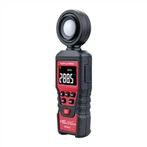Precautions for UPS equipped with regulated power supply
(1) The regulated power supply must provide reliable protection function for mains overvoltage input. Except for the parameter voltage regulator, which can provide a 220V regulated power supply to the load for a long time under extreme operating conditions when the input voltage of the mains is up to 300V, the allowable upper limit of the mains power supply for other types of AC regulated power supplies is within 260V. Moreover, the parametric regulator has a sine wave Catharsis function: when a 50Hz sine wave or even a square wave with serious waveform distortion is input at its input end, it will send a sine wave power supply with less waveform distortion at its output end. Therefore, it has bidirectional anti-interference ability, which can not only suppress the impact of interference from the municipal power grid on the load, but also suppress the pollution of the power grid caused by the interference generated by the load. But its frequency adaptation range is narrow, and it is only suitable for use in power supply systems with relatively stable grid frequencies.
(2) Due to the transient high voltage that lasts for about 1-2 seconds at the moment of startup of electronic tube type and magnetic saturation type AC voltage regulators, it is easy to induce faults in the UPS power supply system. Therefore, these two types of voltage regulators should not be connected to the UPS uninterruptible power supply system.
(3) The regulated power supply should have the advantages of wide regulated range and strong anti-interference ability. UPS is an uninterrupted power supply. Mainly to solve the problem of frequent power outages. For areas where the mains voltage is often low and power outages are not frequent, simply add a regulated power supply. Adding only UPS without a regulated power supply cannot solve the problem of low voltage. Connecting the two in series will not pose any harm to UPS.






